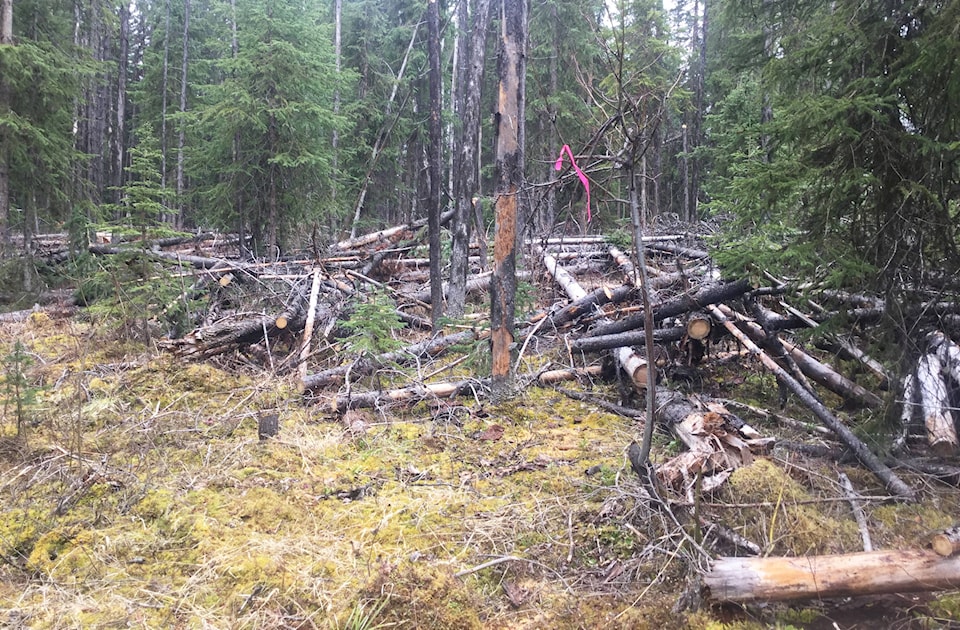The Burns Lake Community Forest (BLCF) plans to mitigate wildfire risk at the Boer Mountain Recreation Site by removing dead pine.
“The threat of forest fires in the Boer Mountain area is imminent; we are on borrowed time,” said BLCF manager Frank Varga. “The mean fire interval in this forest type is about 125 years.”
A large fire occurred at Boer Mountain in 1922, burning 2080 hectares around the edges of the site. Two years later, a smaller fire burned 31 hectares about 2.5 km southwest of Boer Mountain; and in 1967, another large fire burned 1083 hectares northwest of the site. However, all these fires were human-caused.
“A fire of any size could considerably spread quite quickly to adjacent properties and down into town, or spread further uphill into the mature spruce stands that are on the opposite side of Boer Mountain,” continued Varga.
“The amount of dead pine in this area is quite extensive and currently creates considerable hazard,” he added. “We were obligated to do something about that.”
The BLCF will have detailed digital photography showing the exact location of each individual dead pine at Boer Mountain by the end of summer. Once this is complete, the plan is to start removing the dead pine in 2018.
“Harvesting will be completed through individual tree removal with a harvester and then likely hauled out with a forwarder,” explained Varga. “Skidders and feller bunchers may be used in areas near the main road, but most of the area will be harvested using a harvester and forwarder combination.”
Varga said the BLCF is still in the initial states of planning.
“I have had conversations with the Burns Lake Mountain Biking Association (BLMBA) and Recreation and Trails B.C. representatives, and there is consensus that management through harvesting is a strategy that can be deployed,” he said. “Project success will be a combined effort of BLMBA board members and Recreation and Trails B.C. representation.”
Eventually, the BLCF plans to map the entire K1A licence (approximately 92,000 hectares) to conduct this same work.
“We are developing five to 10 year operational development plans,” said Varga.
According to the BLCF, the main problem at Boer Mountain is the extent of tracks of dead pine.
“There is nothing wrong with dead pine trees; dead trees are an important part of the ecosystem and nutrient recycling; however, when you have hectares and hectares of dead standing matchsticks, you have a fire hazard, you also have a barrier for wildlife movement as they are all rotting and fall over creating impassible blockages,” explained Varga.
In addition, many people in Burns Lake believe that fallen dead trees hurt local tourism.
“We have an amazing network of trails in our area that are frequently difficult or impossible to use because of fallen trees,” said BLMBA president Guy Epkens-Shaffer last year.
Other efforts have been made in the past to address beetle-killed pine at Boer Mountain. In 2015, crews from B.C. Wildfire Service assisted BLMBA and Recreation Sites and Trails B.C. with a fuel mitigation project.
